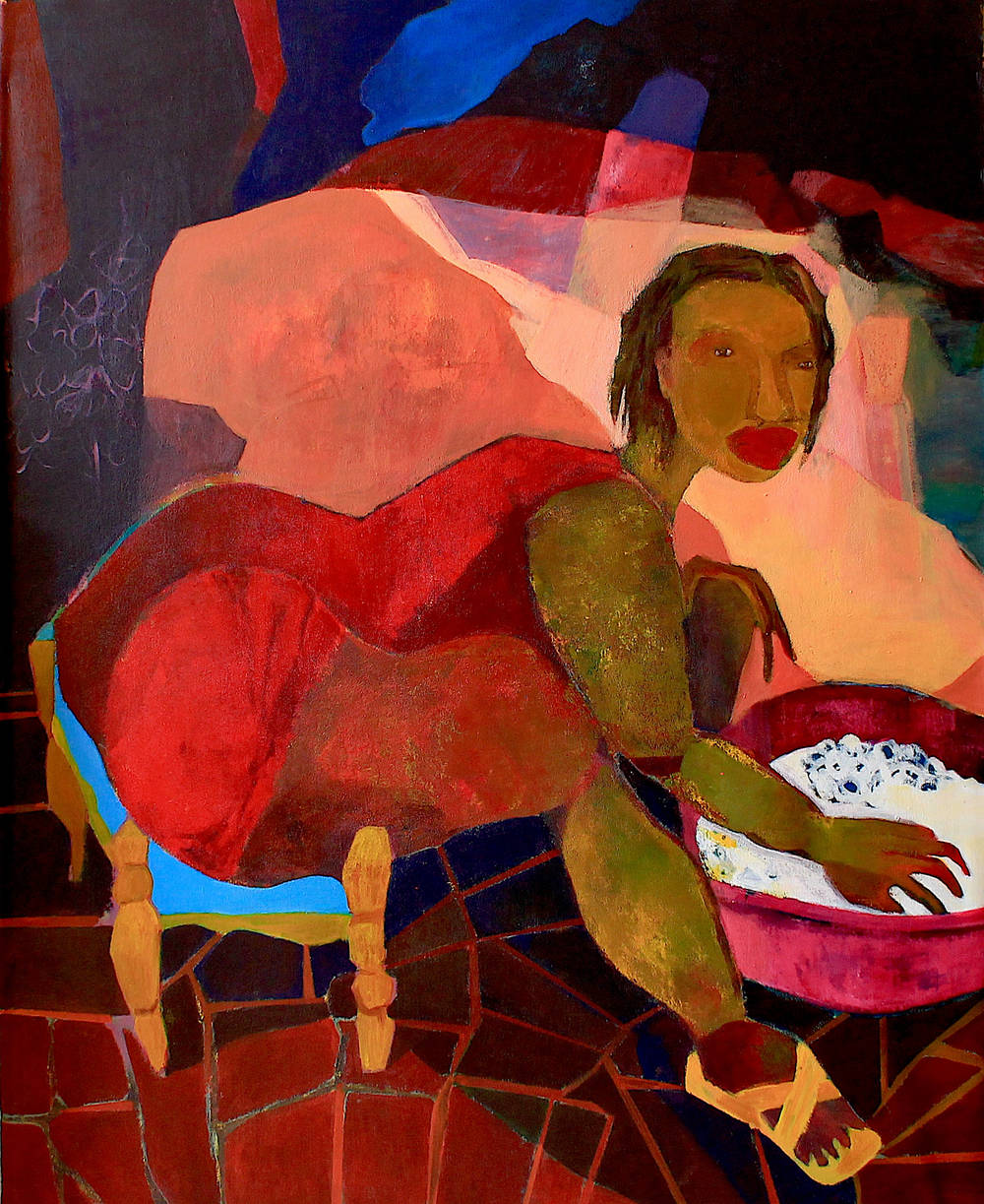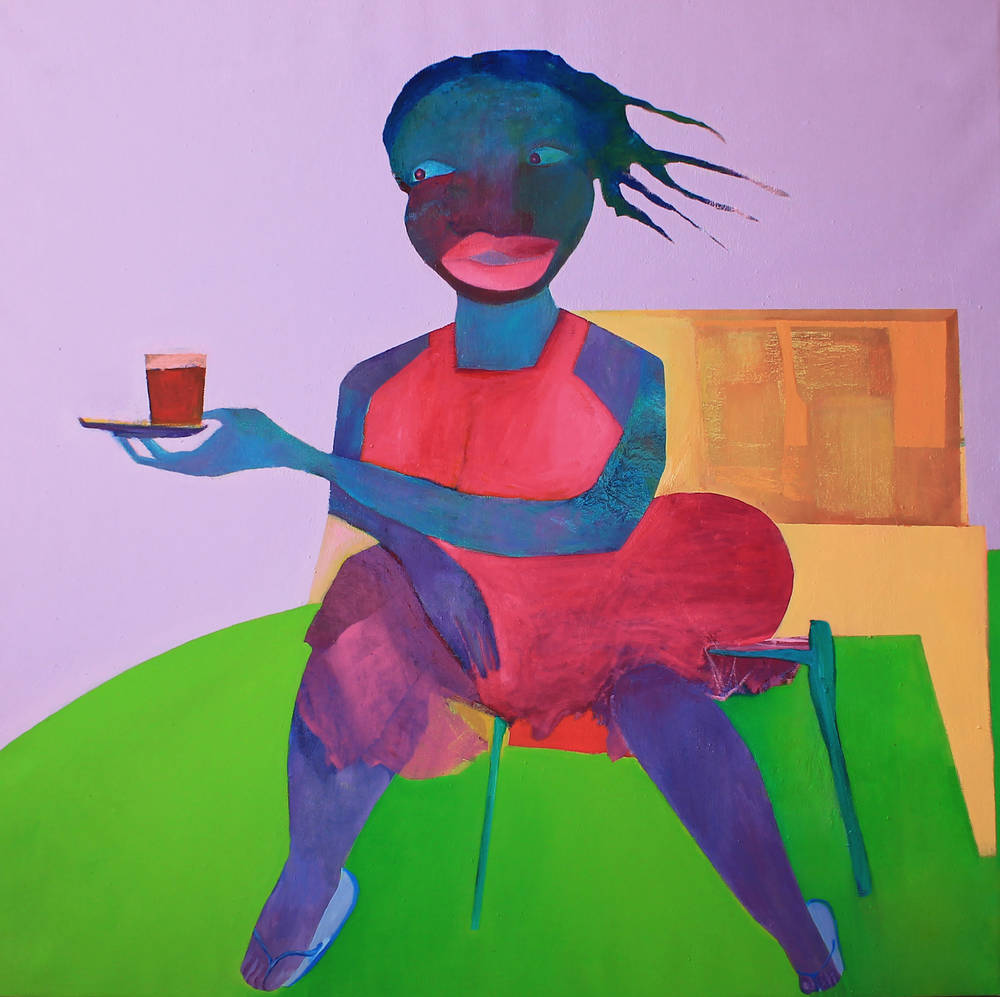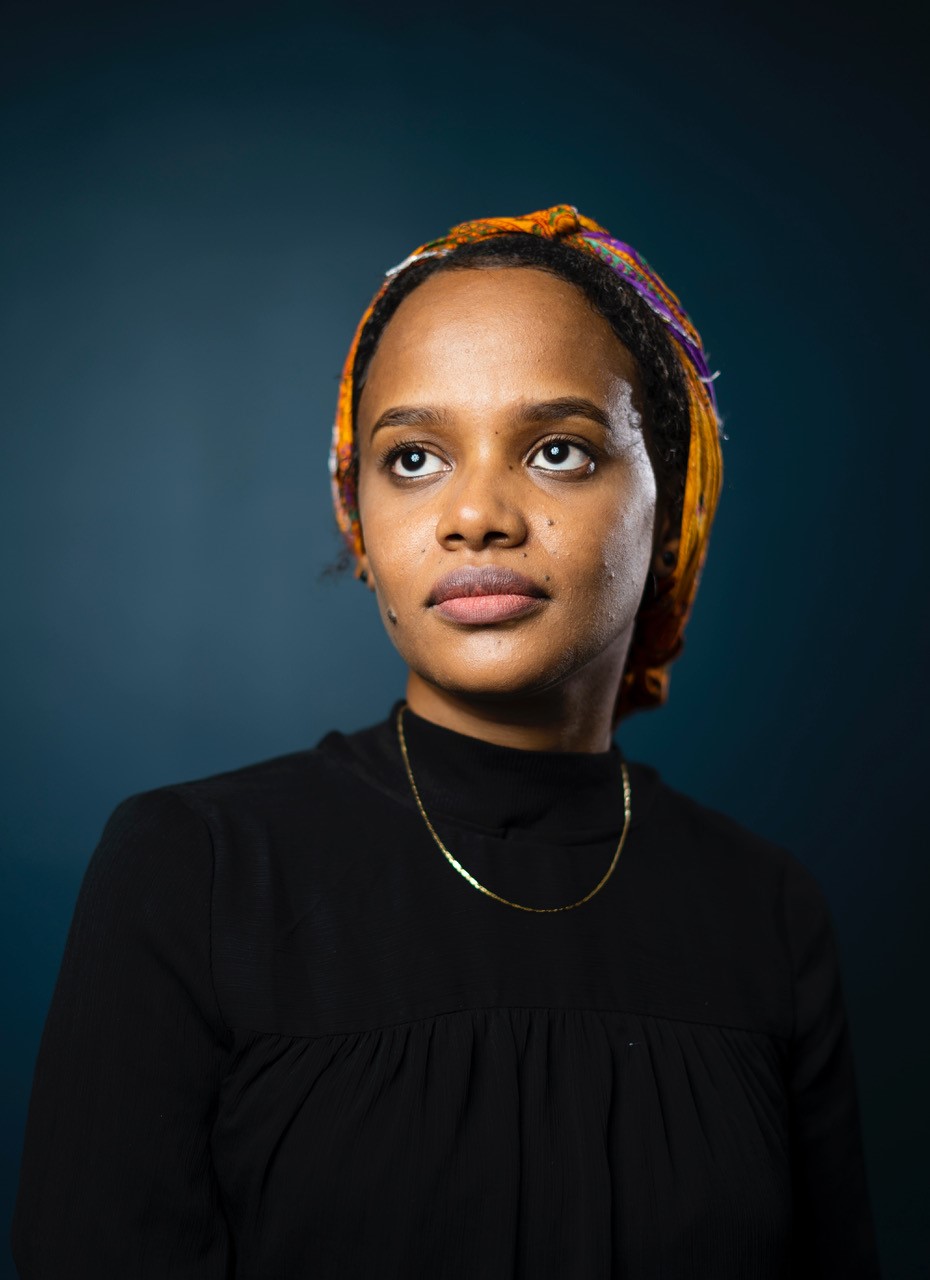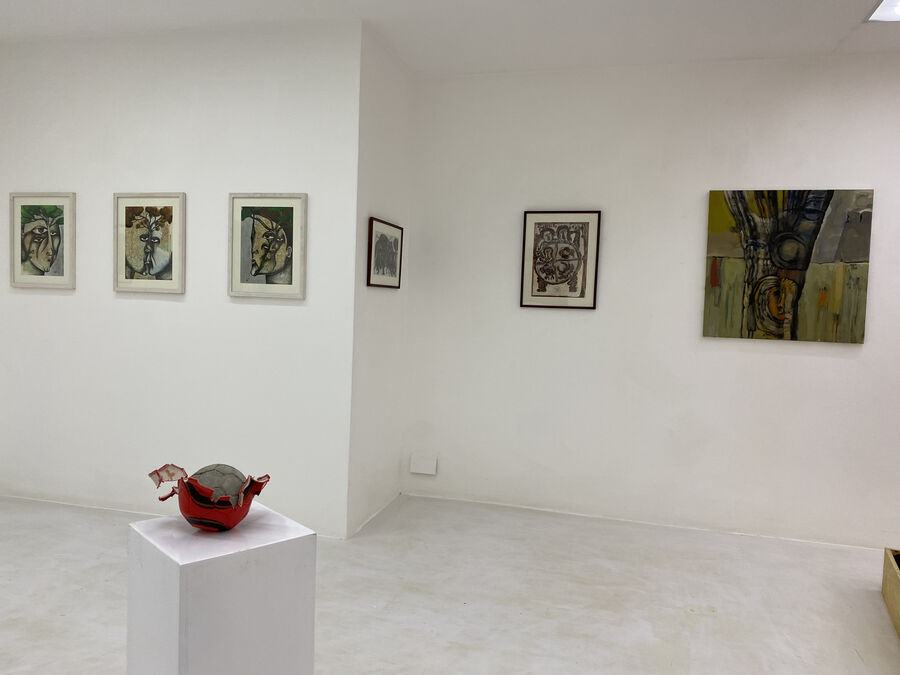How can cultural identity be represented through art? This question had already been addressed by the first national literary and art movement in Sudan. Many things have changed since then, but the desire to express a collective political identity through art remains - and can also be seen in the works of Amna Elhassan.
In postcolonial countries, the relationship between art and politics is often complex and contentious: On the one hand, art has the power to challenge the status quo and give voice to the experiences and perspectives of marginalized communities. This can make it a target for censorship and suppression by those in power. On the other hand, art produced in postcolonial countries is often shaped by the ongoing legacies of colonialism and the need to negotiate new identities in the wake of imperial domination. In this article, I will shed light on the entanglement of art and political identity in Sudan through the work of Amna Elhassan, which is presented at SCHIRN.
In Sudan, the first national literature and art movement was The Forest School, founded by Muhammed Al-Makki Ibraheem, Al Nour Abubakar, and Muhammed Abdel Hai. The Forest and Desert School focused on the cultural identity of the Northern Sudan region and the North Sudanese individual, with the symbol of the forest representing the African cultural characteristic and the desert representing the Arab counterpart. This understanding of Sudanese identity as a hybrid of African and Arab cultures was based on connecting different landscapes and ecosystems.

However, this approach has been criticized for oversimplifying complex identities and failing to fully consider the rich and varied histories and cultural practices of both African and Arab peoples. It has also been called into question for its focus on joining landscapes and ecosystems to construct identity, which risks ignoring the complexities and interconnectedness of different biomes and territories.
How to express or not express Sudanese identity
Art critics Hassan Musa and Abdallab Bolla have criticized the Forest and Desert School for reducing Sudanese society to a binary or binational identity and perpetuating colonial stereotypes. In 1993, Musa has argued in the "Sudanese Writings Magazine" that the cultural creators of the Forest and Desert School have "paved the way for the authority of the Islamic money changers and justified their demagogic arguments with references to Arabism and Islam". Instead, Musa advocates for art that reflects ongoing conflicts of class and identity within Sudanese society and challenges the existing reality rather than ignoring it or falling into the trap of political propaganda.
These debates dominated the Sudanese cultural scene until the 80s. But under the Islamic government of the 90s, Sudanese artists struggled to find the freedom to create and express themselves. Censorship and restrictions on artistic expression were common, and those who dared to speak out or create work that was critical of the government or Islam risked censorship or even arrest. Despite facing severe challenges, these artists persisted in using their art as a means of resistance and protest against the oppressive regime. But after the fall of the military-Islamic regime, the old debate about identity has surfaced yet again. And the artistic practice has to face the new Sudanese metamorphoses.
During the Sudanese revolution of 2018, activists sought to form a collective identity to confront the political challenges they were facing. Some revolutionary artists and poets have used the Forest School methodology to reclaim symbols from Sudan's pre-colonial identity. However, they have gone even further back in history and drawn on symbolism and iconography from the ancient Nubian civilization of Koush, which dates back 3500 years. The character of the Sudanese Kandaka, a Nubian woman leader, was chosen to represent the women-led revolution. Artists like Amna Elhassan have offered new ways to express Sudanese identity without relying on imagery from prehistory.

Ethiopian Kandaka Amanitore, Ägyptisches Museum Berlin, 2008, photo: Sven-Steffen Arndt, Image via pinterest.de
Amna Elhassan is a Sudanese artist whose work focuses on the everyday challenges and struggles of people, particularly those faced by women. Despite the seriousness of these subjects, her work is characterized by bright colors and images of women engaging in mundane activities like serving tea, dancing, and singing. Through these seemingly ordinary actions, Elhassan highlights the processes of transformation women in Sudan undergo, both physically and mentally. Despite the joy and celebration depicted in her art, Elhassan's work is also marked by themes of pain, loss, and grief, reflecting the ongoing hardships and trials that people in Sudan are confronted with. Through her art, Elhassan not only honors the strength of women but also highlights the need for continuing progress and change.
Depicting collective identity through a feminist lens
In her art, Elhassan grapples with the social and political issues of the Sudanese revolution and the quest for national identity, but she approaches these themes through a unique lens. Rather than seeking to uncover a singular, prehistorical identity, Elhassan delves into the everyday stories of Sudanese women. One such work is "the Tea Lady” which highlights the struggles of contemporary Sudanese women in the public sphere. The "Tea Lady" represents a common sight in Sudanese cities, serving hot drinks and creating temporary gathering places, but also targeted for underemployment and discrimination under the Islamic regime. In other works like “Tea Lady, Outdoor, Microphone” Elhassan adds further symbols: The "Microphone" represents the "Goona," a Sudanese wedding singer, and speaks to the marginalized position of women in the socio-economic sphere. Through these powerful symbols, she pays tribute to the strength and resilience of women in Sudan but also exposes the pain and challenges they face in a male-dominated society.

Her work can be seen as an artistic contribution to the current debate in Sudan about collective identity. Through her public portrayal of the woman figure, she engages with a feminist epistemology reflecting Sudan's current social and political climate. She also brings this perspective to the discussions within the Sudanese art movements. While her work may be more closely aligned with Hassan Musa's critique of class and identity than the Forest and Desert School, Elhassan contributes to this conversation by incorporating private stories into the larger narrative of collective identity. Every story is important in the Sudanese quest to build a shared identity, and Amna Elhassan's artistic expression helps bring the revolutionary generation's female perspective to this discourse.

AMNA ELHASSAN. DECONSTRUCTED BODIES – IN SEARCH OF HOME
November 4, 2022 – February 12, 2023











